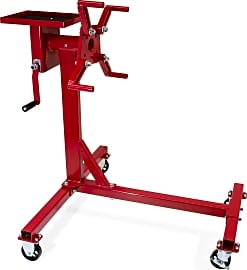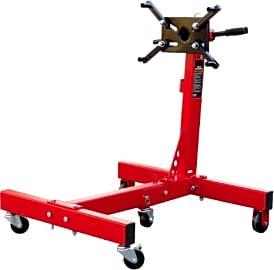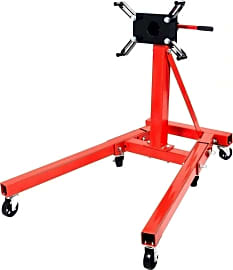The 7 Best Engine Stands

This wiki has been updated 23 times since it was first published in June of 2019. Given that the average car engine weighs between 200 and 500 pounds, you are going to need one of these engine stands to hold it steady when out of the frame, if you want adequate space to work on it. Our selections will help you decide on the most appropriate model for your needs, whether you are a DIYer or a professional mechanic. When users buy our independently chosen editorial choices, we may earn commissions to help fund the Wiki.
Editor's Notes
June 19, 2019:
Given that an engine stand is such a simple and straightforward piece of equipment, it is quite difficult to produce one that will be a total failure. With that said, there are some details that set apart the good stands from the merely adequate stands. Generally speaking, a geared turning mechanism like the one on the Jackco 71000R is easier and more convenient than a direct turning mechanism such as the one on the Jegs 80041 or the Eastwood 31551. The purpose of a geared reduction is that it lowers the output speed relative to the input speed but also increases the torque at the output shaft. This decreases the exertion required to turn the mounted motor.
Even within the category of stands with direct action there is a difference in how much the consumer is taken into account. The Jegs provides a long handle so that the proper leverage can be applied to the engine. GoPlus demonstrates poor foresight on an otherwise well-built stand by providing a very short (about 8 inches) handle that will make it difficult to turn anything over 200 pounds. When looking for a stand, since motors are meant to be mounted using a shop crane, the leg configuration of the stand becomes important. Depending on the length and width of the crane's legs, a stand must be chosen that will not block the legs from intersecting with the stand such that inserting the mounted plate to the neck would prove difficult or impossible.
There is inherent danger in removing and manipulating any large machine. It should only be performed by a trained automotive technician to avoid personal injury or damage to the engine.












